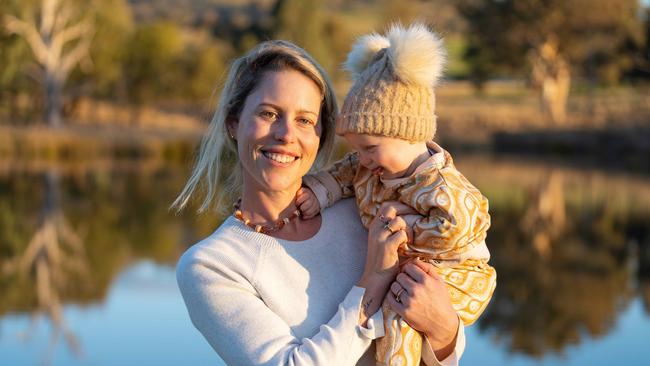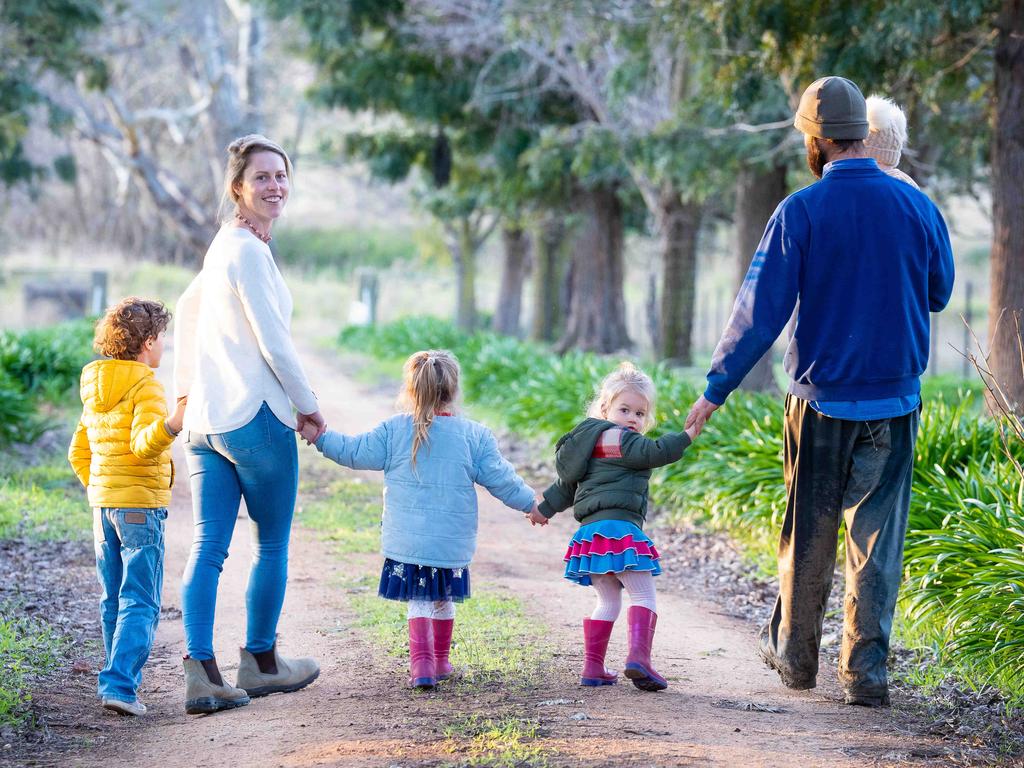Shifting views on workplace put stay-at-home mums on defensive
For mother-of-four Virginia Tapscott the decision to put a career she loved on hold to devote herself full-time to raising her family was the only choice for her.

For mother-of-four Virginia Tapscott the decision to put a career she loves on hold to devote herself full-time to raising her family was the only choice for her, but it’s also one she feels constantly called on to defend.
Ms Tapscott has put a pause on her writing career to focus on raising her children on the family’s property outside Albury on the NSW-Victorian border because she believes that the person who is best qualified to care for her children is their own mother.
But the increasingly unusual choice has put her at odds with the majority of Australian mothers, with 66 per cent of women with children aged under four and 78 per cent with children aged five to nine in the workforce, the latest Australian Bureau of Statistics figures show.
The last two decades have seen successive federal governments steadily increase incentives for women to return to work, with childcare subsidies becoming a central policy platform during the last federal election.
This is in contrast to the financial support introduced by the Howard government in the early 2000s, including the baby bonus and the Family Tax Benefit Part B, which was designed to support families with one parent acting as a full-time carer.
Ms Tapscott said the focus on these incentives made mothers feel pressured to return to the paid workforce and that the work they did was not valued.
“I feel a pressure, and I talk to a lot of women who feel that pressure that this was so blatantly directed at us to get back to work,” she said. “I’m already working and I am annoyed about that.
“But I think just because the topic is sensitive and tricky it still needs to be discussed, those are often the most important things to talk about.”
University of Sydney Business School expert on women in work Marian Baird said the past three decades had seen a major shift in society, with three quarters of mothers returning to work after having children.
“There are significant economic drivers, one of them is that governments in Australia and around the world have been encouraging, enticing and providing incentives for women to return to the labour market,” Professor Baird said. “They’ve been doing that because fertility rates have been dropping and there are labour market shortages and the best way of growing your GDP is to get more people into the market economy.”
Australia Institute Centre for Future Work policy director Fiona Macdonald said it was important that all women had a choice.
“The question we need to ask is … have we given women an option so that families can make the choices, we still don’t have the situation where that choice can be made on any equitable basis,” she said.
The Australian Family Association’s Carrie McCormack said the government needed to provide more support to families with a stay at home parent, adding that she had seen the financial support change many times in the 17 years since she had her first child.
“Parents have whiplash about what the government is doing for their family taxation policy,” she said.
“We don’t know what is going on and it’s hard to see what is the greatest benefit for our family and we feel like no one is thinking of us.”





To join the conversation, please log in. Don't have an account? Register
Join the conversation, you are commenting as Logout